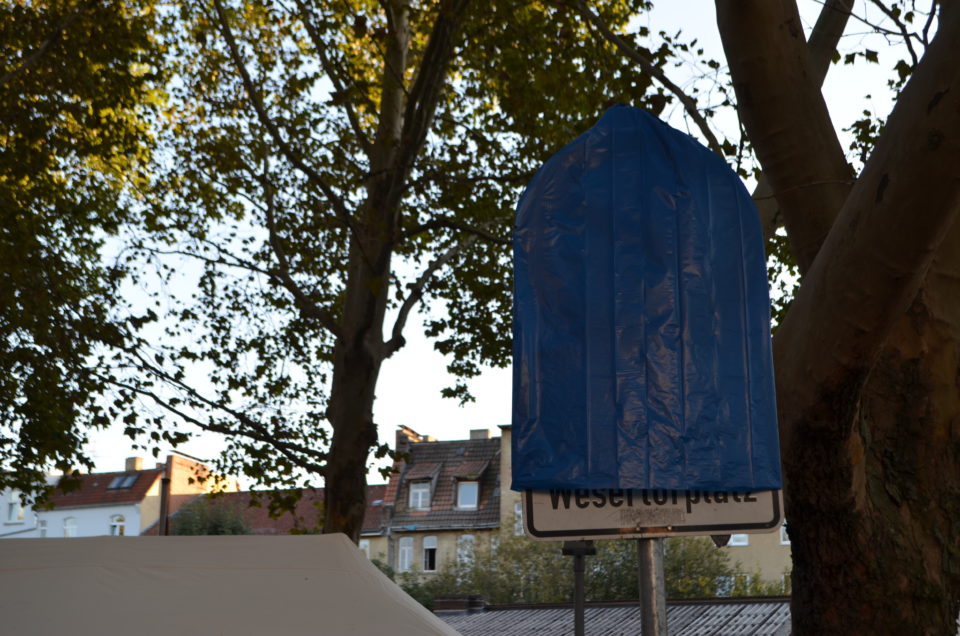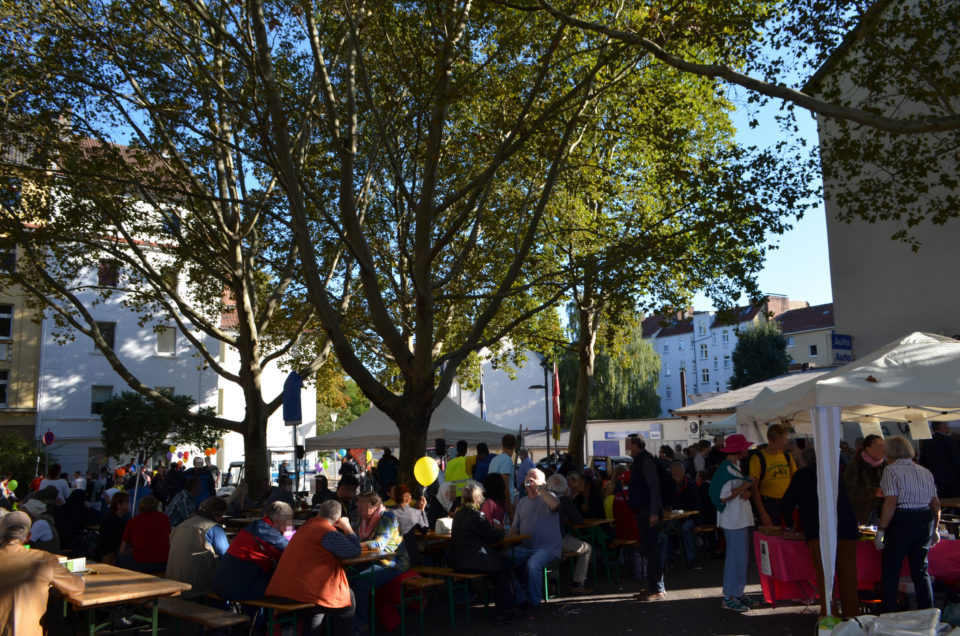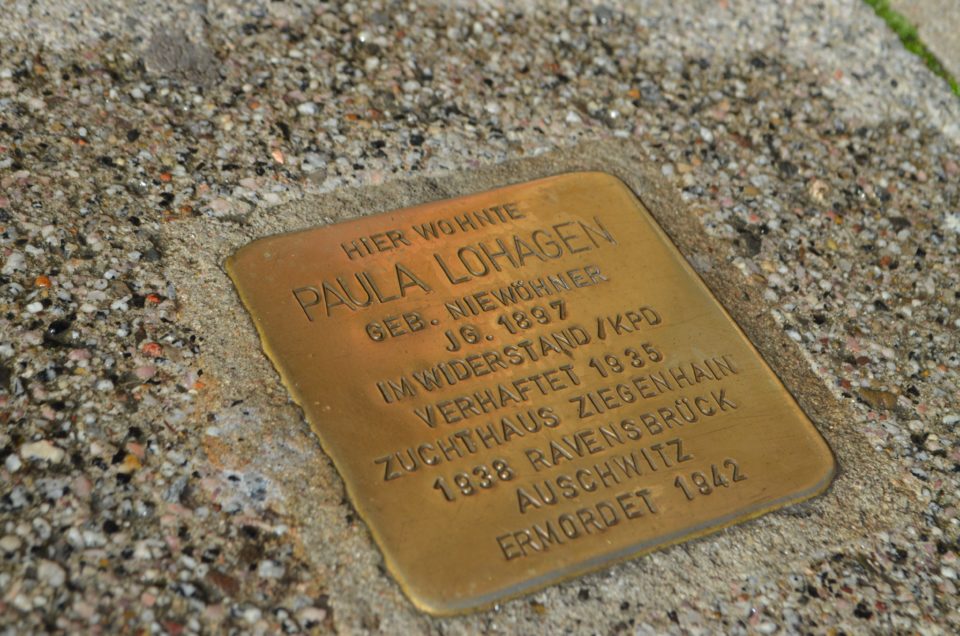A report from the Wesertor district of Kassel

The Wesertorplatz in Kassel is well filled on the last warm Saturday in September. The community work of the city district has pulled out all the stops: From the youth sports hall to the local microbrewery to the mosque association, everyone is there. It is eaten, played, drunk and last but not least discussed and laughed. A resourceful city employee slipped a garbage bag over the sign indicating the no-alcohol zone.
A few weeks earlier: The public order office of the city of Kassel roams the square together with the police, parked demonstratively on the common area. The law enforcement officers and wardens stand with their legs apart in the dark. The arms are crossed in front of the combat vest, endeavor radiating strength, and looking, as if only an empty seat would please them. The usually resident drinkers become a supposed security problem.
In the chaos of the city festival on Wesertorplatz, there is no sign of security problems. You get to know each other. “Because this district is for everyone”, so it echoes from the stage. What is meant is the mixing of different milieus in the small district. Of precarious, Students to workers are each income bracket, Religion and people of all colors welcome. The crowd of children, the the 800 can hardly wait to walk the meters through Sodensternstrasse, underlines the statement loudly and running. It's also about that, that the residents reappropriate the public space with the district festival.

A few meters further, the Sodensternpark was closed, because of the danger of an adjacent building collapsing. The public order office drives the remaining young people out of the park with satisfaction, you can imagine here too, that the blocking doesn't play into their hands badly. Because, as is well known, deals should be made here, at least that's how it seems from the regular raids by the police patrols on the migrant youth.
However, despite all the attempts at criminalization, this doesn't seem to bother the adjacent student flat-sharing community. more important, that everyone could use the table tennis tables in the park until the lockdown, as Markus from Sodensternstrasse reports. Closing the park would eliminate communal life from the street. lived in the district 2018 about 1800 student, who are usually only looking for a place to stay for a few years, often as a single household – probably one reason for this, that half of the population of the district changes every few years. A neighborhood challenge, which, not least because of its proximity to the university, fits perfectly into the restructuring plans of real estate investors.
On the other side of the block, in Ysenburgstrasse, is meanwhile even worked on Saturdays. The long decaying building with the number 36 is recently renovated. An investor bought the property after a long inheritance dispute and, according to his own statement, is now converting the venerable old building into a private student residence. Although the square meter is not priced on the scaffolding, is already clear: The rents will hardly be socially acceptable. Small apartments with a kitchenette at a high square meter key, with tenants moving quickly, this primarily pleases the account balance of the investor.
“A neighborhood challenge, which, not least because of its proximity to the university, fits perfectly into the restructuring plans of real estate investors.”
Meanwhile he is 800 meter run of the children on the garden road 27 passed. A small metal paving stone in front of the building reminds us, embedded in the ground, an die 1945 Communist Paula Lohhagen murdered by the Nazis. Where Lohagen lived almost a hundred years ago, social inequality is still a topic of debate today.

The Wesertor generally has a problem with long-term retention by residents. The old working-class district historically has many small apartments in a small space, which keeps relative rents very high, However, because of the small number of square meters, it is particularly attractive for low earners. That keeps few families and flat-sharing communities, that naturally take up a lot of space and promote isolated and precarious living. In addition, the restructuring of privatized living space in the recent past has also contributed to this. Low-priced apartments with fluctuation instead of affordable long-term living dominate the development.
You can find out more on the shady Wesertorplatz, that the massive volume of traffic and the adaptation to climate change in the district are other urgent problems in addition to social segregation. There is a need for sustainable greening of residential areas and a solution for the imminent traffic collapse - not only in downtown Kassel -, otherwise, more urban districts such as the Wesertor would lose quality of life for their residents.
But sustainable and non-profit-oriented creation of living space is hardly in sight. A real estate bubble develops throughout Kassel, it is being modernized in private hands, bought and sold, while social housing can only be found in the outskirts. The demolition of a car dealership in Fuldatalstrasse, for example, leaves no social housing, but rather a REWE store. A large parking lot is of course included.
The district should be concerned about this development. Because if the developments of segregation, Housing restructuring and traffic increase is not stopped, the livable small part of the city becomes a quarter, after which only investors and city planners lick their fingers, However, residents will probably turn their backs in the long term. Just a district, who knows each other, organized and involved can counteract this. And the cards are very good for this on the Wesertorplatz in September.

